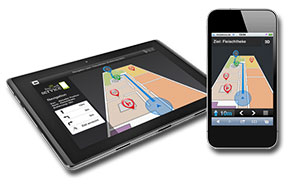Richard Simmons explains why changing consumer behaviour, driven by technological change since the birth of ecommerce 20 years ago, has been repeatedly mis-understood – and why real understanding might be just around the corner.
Spatial Intelligence
Over the years, changes in consumer behaviours have been much mis-understood. Conclusions have been jumped to and trends have been identified, only to be superseded by seemingly contradictory new ‘truths’.
Nowhere has this been truer than in retail, where understanding consumer behaviours is, of course, fundamental to success. Over the years, we've been treated to prediction after prediction as the industry, and industry watchers, have struggled to keep pace with a rapid evolution of consumer behaviour – driven by the sheer pace evolution of digital, and mobile digital, devices and social media.
For instance, the ‘death of bricks and mortar stores’, once much vaunted, now barely rates a mention. eCommerce is 20 years old and has taken a respectable chunk of the consumer market – but it turns out that human behaviour is a bit more complex than online or offline, black or white. Who’d have thought?
The truth of human retail behaviour in our mobile, digital world is pretty complex, it turns out. For starters, it is omni-channel. People don't pick online and stick with it, or only shop in-store. They don’t shop only via mobile devices, or kiosks, or from desktop computers. They do a bit of everything – the precise mix depends on a complex array of personal, environmental, cultural and locational factors.
Perhaps most important, in this omni-channel world, are the blurred lines between all of these channels. Online research drives offline sales and, through the phenomenon of showrooming, vice versa. A trip to the store drives in-store mobile browsing, and so on.
So, the few things we now know for sure about modern consumer behaviour are as follows: It is complex, it is diverse and it is ever changing. What’s more, consumers naturally embed aspects of one channel into another – the mobile experience into the store, for instance.
The challenge for retailers, is to understand this behaviour. Online is the easier nut to crack in that sense – traffic, sales, engagement, social interactions and so on can all be monitored and modelled.
But what about in store?
Stores these days are spaces filled with physical and virtual information - data from people, products, movement, social exchange, online, in person, in stores, facilities and offices, around them, and between them. These store spaces are filling up with information, insight, and above all intelligence.
The challenge for retail technologists is to find ways to capture, analyse and act on this information in real time – to adapt the retail experience to consumer behaviour by seeing this ‘spatial intelligence’, and using it to get closer to everyone who interacts with the organisation.
Given the technologies required to do just that are already here [http://www.uk.logicalis.com/spatial-intelligence/], maybe retailers’ ability to understand consumer behaviour has finally caught up with the pace of its change.

